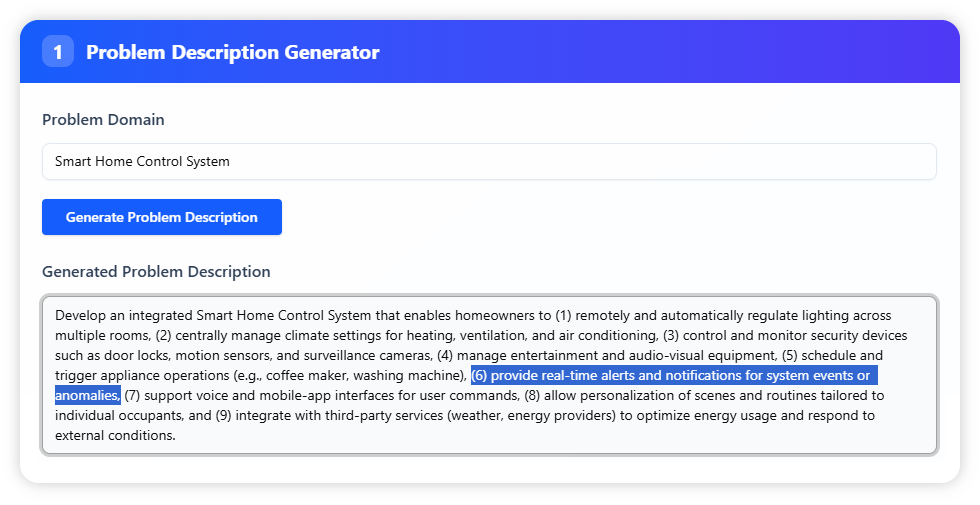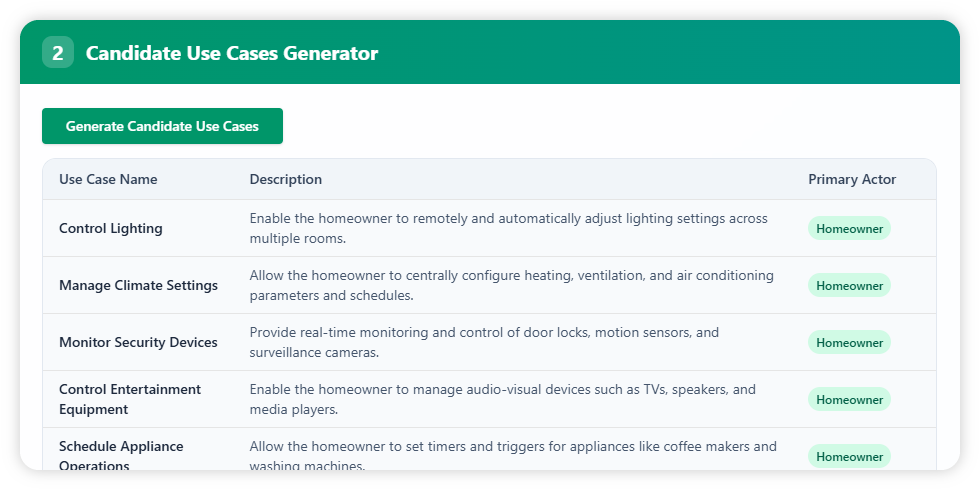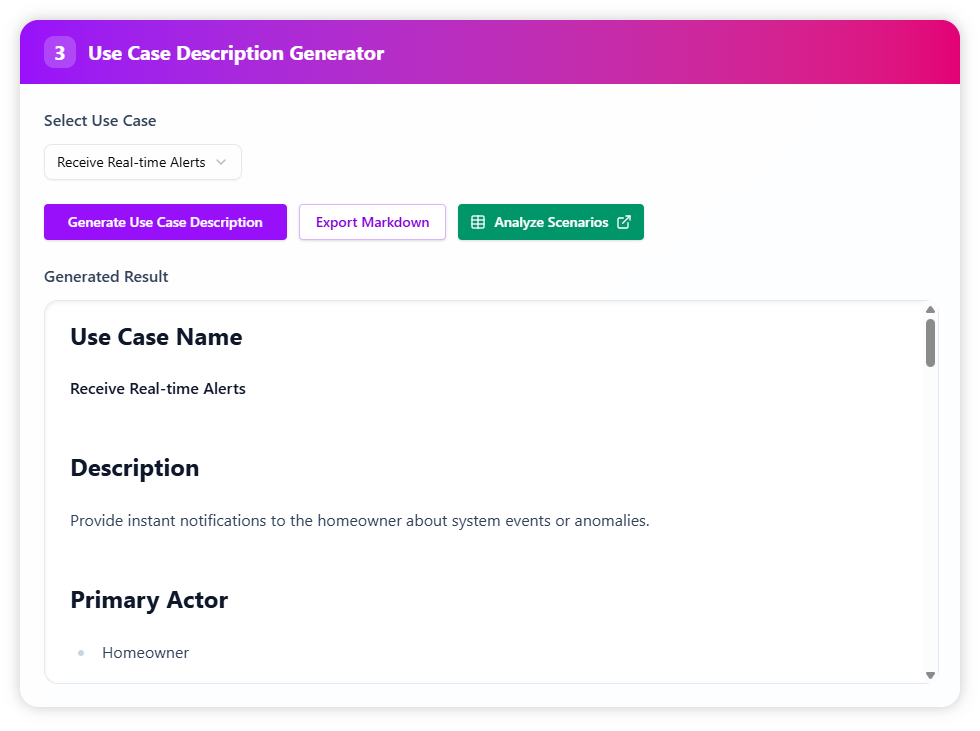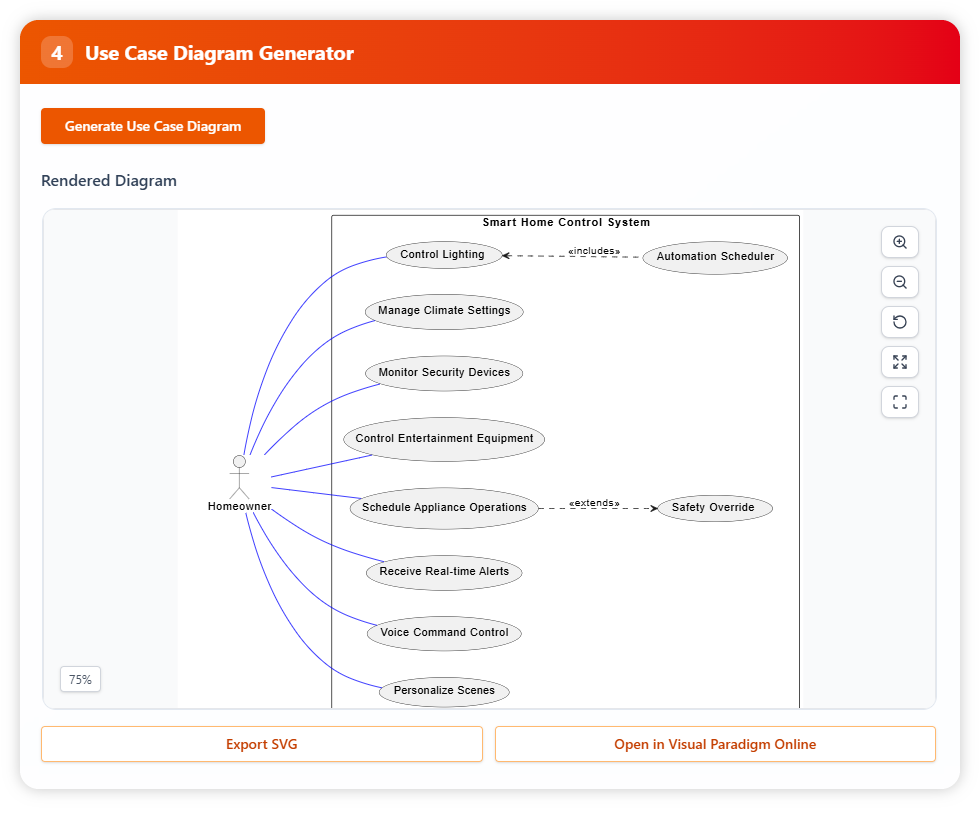Now Reading: AI-Generated Use Case Description Example: Smart Home Control System
-
01
AI-Generated Use Case Description Example: Smart Home Control System
AI-Generated Use Case Description Example: Smart Home Control System
A smart home control system connects multiple household functions into one platform, from lighting and climate control to security and entertainment. This example illustrates how the use case description generator models these functions for clarity and adaptability.
Step 1: Problem Description Generator
Enter Smart Home Control System as the problem domain. The tool generates a detailed and editable problem description, covering essential features like security monitoring, appliance scheduling, scene personalization, and integration with third-party services. This editable text allows tailoring the scope to specific smart home requirements.

Step 2: Candidate Use Cases Generator
Click the “Generate Candidate Use Case” button to see a list of use cases with their name, description, and primary actor. For this system, examples include controlling lighting, managing climate settings, monitoring security devices, scheduling appliances, receiving alerts, and more. These use cases capture both homeowner interactions and system administration tasks.

Step 3: Use Case Description Generator
Select one candidate use case for detailed expansion. Here, the chosen case is Receive Real-time Alerts. The tool produces a structured description that includes preconditions, main flow, alternative flows, and exceptions, giving a complete view of how alerts are delivered under different circumstances. You can also export the description in Markdown format for documentation or sharing.

Step 4: Use Case Diagram Generator
Generate a use case diagram that illustrates homeowners, third-party services, and administrators interacting with system features. The diagram can be exported as an SVG file or opened in Visual Paradigm Online for further refinement and collaboration.


